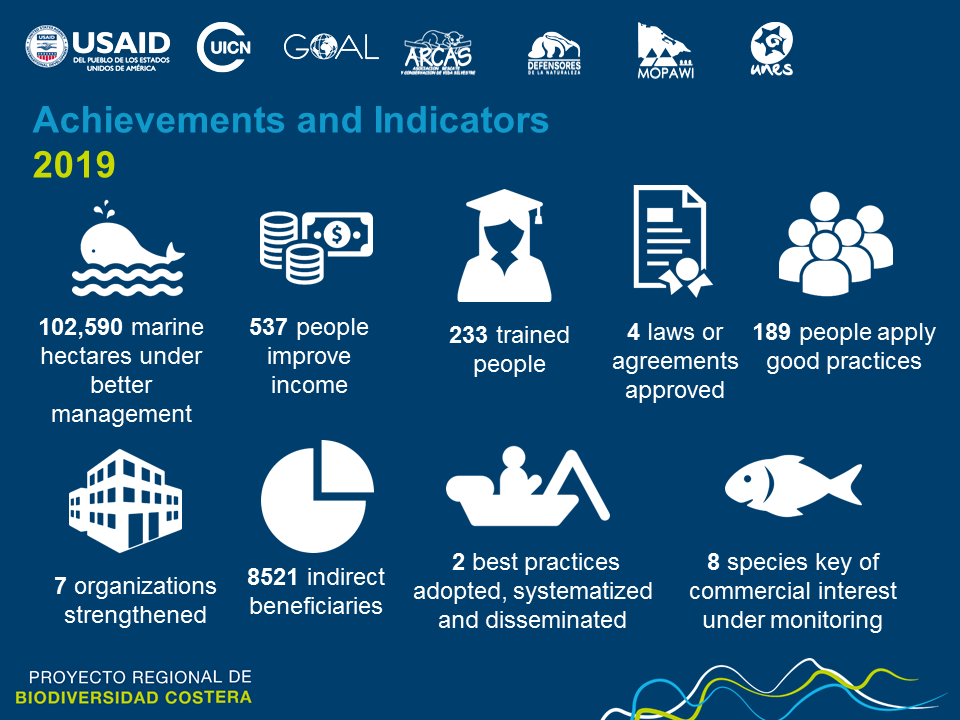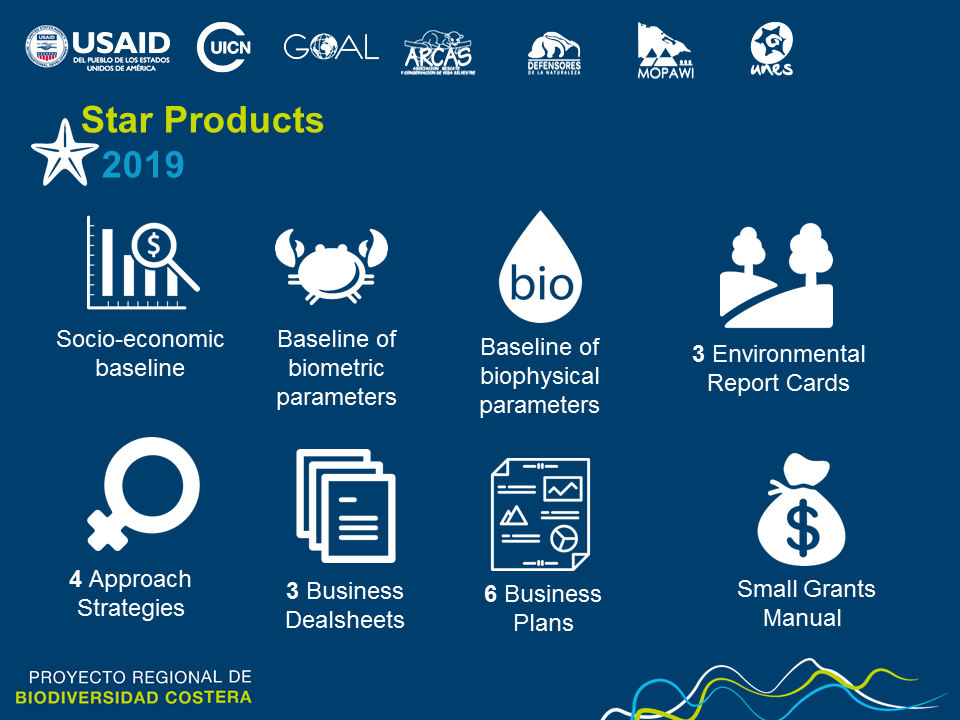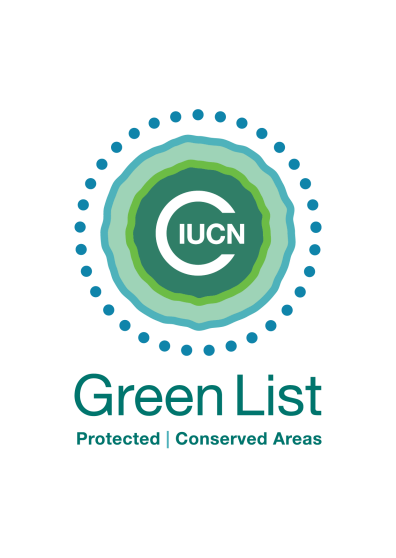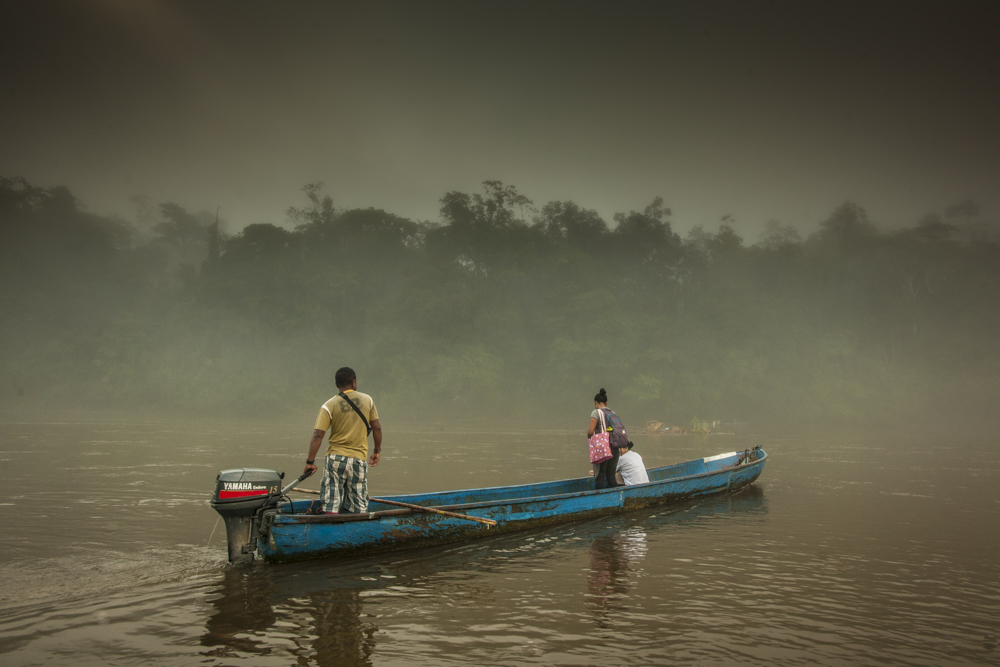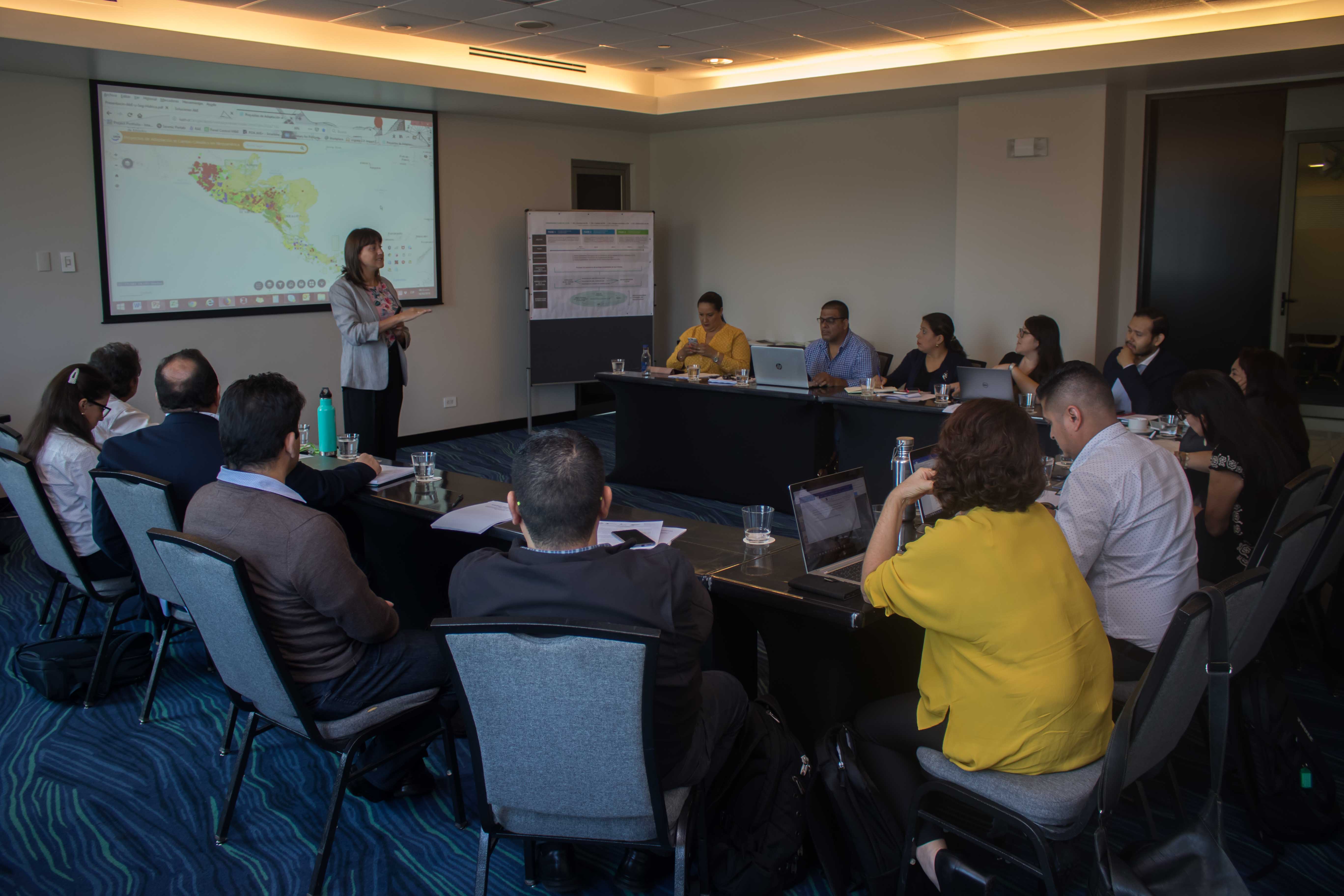USAID project advances in biodiversity conservation and prosperity of marine-coastal communities
People from three high biodiversity sites in Central America have benefited from the Regional Coastal Biodiversity Project. In El Salvador, three thousand residents of 18 communities in the lower basin of Río Paz are benefiting thanks to the co-management, mangrove cleaning and maintenance, and in the Caribbean of Guatemala, more than 100,000 hectares under improved management.
San Salvador, November 14, 2019 (IUCN). The USAID Regional Coastal Biodiversity Project presented the results obtained during the 2018-2019 period, in terms of biodiversity conservation, promotion of biocommerce for local prosperity, strengthening the governance of natural resources and sustainable landscape management.
Through the implementation of four strategies focused on social inclusion, governance, biocommerce and communication, Coastal Biodiversity reports concrete achievements in Motagua, the Lagunar System of Karataska and Río Paz, three high biodiversity sites in Guatemala, Honduras and El Salvador , where the project has been working since January 2018.
Strengthening of the regulatory framework for marine-coastal governance
Support for local processes for the governance of marine-coastal resources resulted in the approval of four regulatory instruments:
- Ministerial agreement for fishing closures in the Caribbean of Guatemala.
- Co-management agreement for the Garita Palmera mangrove in El Salvador.
- Regulatory agreement of mangrove areas within territorial reserves of Guatemala.
- Agreement for the conformation of the governance committee for the update of the Fisheries Management Plan of the Lagunar System of Karataska, in Honduras.
Thanks to these agreements, almost 3 thousand fishermen in the Caribbean of Guatemala participate in the establishment of fishing closures and in the working groups with the fishing authority, for the joint coordination of actions and decision-making of the sector.
In El Salvador, the Aguacate Microbasin Committee obtained technical assistance to achieve its co-management status of 133 hectares of the Garita Palmera mangrove, before the Ministry of Environment and Natural Resources of that country.
Therefore, more than 3,000 residents of 18 communities in the lower basin of Río Paz benefit from co-management, mangrove cleaning and maintenance activities.
The strengthening of governance benefits almost 2,500 people in the Karataska Lagoon, through the implementation of the fishing protocol, which includes the distribution of benefits for the Miskito population.
Improved Livelihoods
Coastal Biodiversity affected 537 people by improving their economic income through training and, in some cases, the provision of equipment for the production of mangrove honey, as well as improving the capacity of three fish businesses operating in the Karataska Lagoon System.
With the training plan, consisting of 17 courses, 233 people from all three sites, including coast people, technical personnel and resources rangers, are better able to produce honey, handle fishery products, manage wetlands, restore mangroves, perform biophysical monitoring , attend rescue and survival situations, and incorporate the gender approach and strategic communication into their daily work.
Through technical assistance and training, the Mosquitia Development Agency (MOPAWI), the Defensores de la Naturaleza Foundation, the Wildlife Rescue and Conservation Association (ARCAS) and the Salvadoran Ecological Unit (UNES) strengthened their capacities for administrative and financial management, and the incorporation of the gender approach in their organizations. The regional project also facilitated the training of 15 DIPESCA technicians in gender equality.
Promotion and adoption of sustainable landscape management practices
Thanks to the legal agreement reached between the Network of Artisanal Fishermen of the Guatemalan Caribbean and Lake Izabal, as well as the Directorate of Fisheries and Aquaculture Regulations (DIPESCA) of Guatemala, more than 100,000 marine hectares are under improved management, through the agreement of fishing closures.
In support of DIPESCA, mass dissemination actions were carried out to promote and comply with these closures in 14 sites and for at least 14 commercially valuable species in the Caribbean of Guatemala.
In Honduras, through the Protocol for the Management of Natural Resources of the Coastal Territorial Councils, signed by five indigenous territorial councils, the adoption of good fishing practices by the Miskito population was achieved.
According to the socioeconomic baseline, 189 people, participants of the project, are applying good fishing and beekeeping practices, such as apiary management and respect for closures and minimum fishing sizes.
Education and Investigation based on evidence
With the purpose of generating information, based on scientific evidence, for decision-making that favours the management of marine-coastal resources, the biological monitoring of eight species of commercial interest was launched; the baseline and Environmental Report Cards were generated for each Project site.
Shrimp, bass, blue crab, punche crab, crown conch, snapper, manjua anchovy and lobster are the species that are under monitoring, due to their importance for food security and the economy of marine-coastal communities.
Coastal Biodiversity, which is being implemented thanks to the cooperation of the United States Agency for International Development (USAID), works for the conservation and sustainable use of the biodiversity of marine-coastal ecosystems in Central America, through the development of productive initiatives of value that foster the roots and strengthen the capacity of local self-management.
More information:
Evelyn Vargas
Communications Specialist Regional Coastal Biodiversity Project
IUCN
